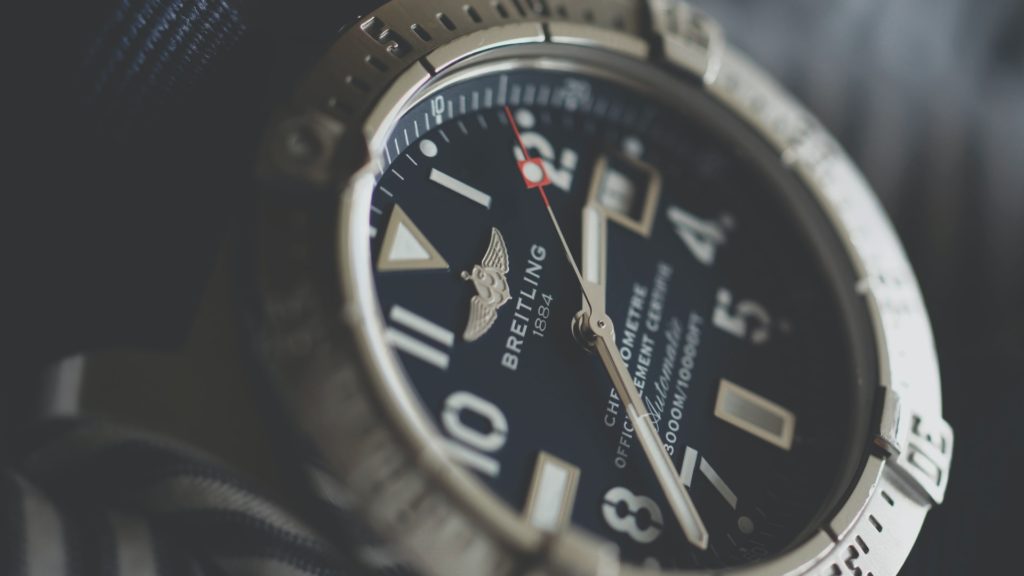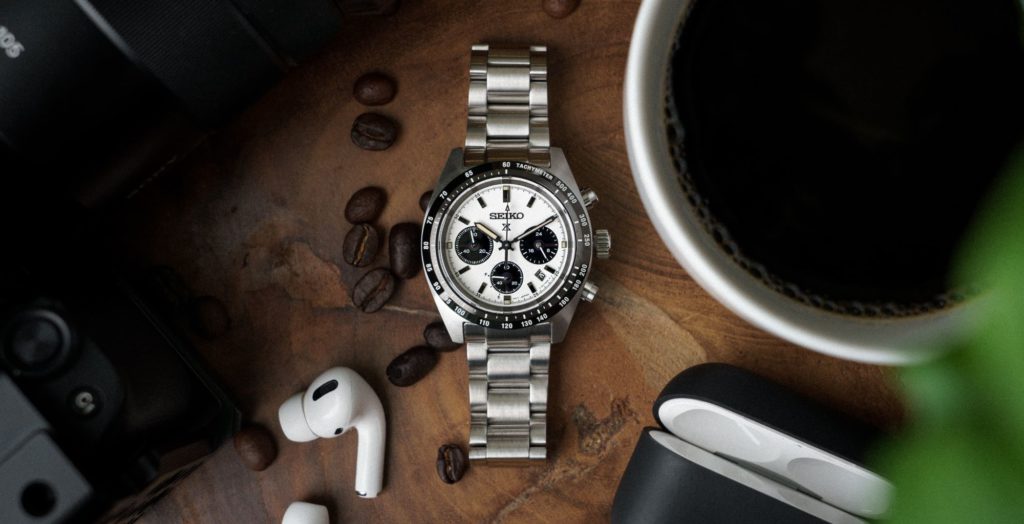The Ultimate Guide to Watch Bezels: Types, Materials, and Designs
Have you ever noticed that shiny ring encircling the face of your wristwatch? It’s not just a ring; it’s the often-underappreciated bezel! Watches have transcended mere timekeeping; they’re now a fusion of style and substance, reflecting our individuality. As we embark on this guide, prepare to view your watch (and perhaps others’) with fresh eyes. Are you ready to become a connoisseur of watch bezels? Grab your favourite timepiece, and let’s embark on this horological adventure!
What is a Bezel on a Watch?
Before we delve into the intricacies, let’s start with the basics. What exactly is a bezel on a watch? A watch bezel is the outer ring that surrounds the watch face or dial. It serves both practical and aesthetic purposes. Bezels can be stationary or rotating and are often used to enhance the functionality or style of a timepiece. They can also feature various markings, such as minute scales or dive timers, which cater to specific activities or professions. Furthermore, some watch enthusiasts appreciate bezels for their role in adding an extra layer of protection to the watch crystal, safeguarding it from scratches and impacts. Now, let’s explore the different aspects of watch bezels in more detail.
Types of Watch Bezels
Bezels are a crucial component of watch design, offering both functionality and style. Let’s explore the various types of watch bezels, starting with stationary bezels:
Stationary Bezels
Stationary bezels are a staple in the world of watch design. These bezels are fixed in place and do not have any moving parts. While their primary function is aesthetic, they contribute significantly to the overall appeal and character of a watch. Here are some key aspects of stationary bezels:
- Aesthetic Enhancement: Stationary bezels are primarily used to enhance the visual appeal of a watch. They come in a wide range of designs, from simple and elegant to intricate and decorative. These bezels often feature various markings, patterns, or textures that complement the watch’s overall theme.
- Material Variety: Stationary bezels can be crafted from various materials, including stainless steel, ceramic, gold, and more. The choice of material can significantly impact the bezel’s appearance, durability, and luxury quotient.
- Decorative Elements: Many stationary bezels incorporate decorative elements such as engraved patterns, gemstone inlays, or enamel work. These elements not only add visual interest but also showcase the artistry and craftsmanship of the watchmaker.
- Dress Watches: Stationary bezels are frequently found on dress watches, where their understated elegance and refined design contribute to the watch’s formal and sophisticated look.
Rotating Bezels
Rotating bezels are dynamic components that can be turned by the wearer. They serve practical functions and are particularly valuable in specific contexts. Let’s explore the most common types of rotating bezels:
- Dive Bezels: Dive bezels are a hallmark of dive watches, designed to assist underwater enthusiasts in tracking their dive times accurately. Key features of dive bezels include:
- Minute Markers: Dive bezels typically have minute markers that allow divers to measure the duration of their underwater adventures precisely.
- Luminous Marker: Positioned at the zero or 12 o’clock position, a luminous marker is a crucial feature. Divers align this marker with the minute hand at the start of a dive, creating a visual reference point for elapsed time.
- Unidirectional Rotation: Dive bezels are unidirectional, meaning they can only rotate counterclockwise. This design prevents accidental adjustments that could lead to erroneous dive time calculations, prioritizing diver safety.
Countdown Bezels
Countdown bezels are specialized rotating bezels designed for activities where precise timing is essential. Here are some key characteristics:
- Countdown Markings: These bezels have markings that count backward from a specific time, such as 60 to 0 minutes. This feature aids in tracking the remaining time accurately.
- Use Cases: Countdown bezels are highly practical for tasks like cooking, where you need to monitor the countdown of minutes or seconds, or for keeping track of parking metre time limits.
Tachymeter Bezels
Tachymeter bezels are popular among individuals who need to measure speed over a known distance, making them particularly valuable for racing and sporting events. Key attributes include:
- Scale for Speed: Tachymeter bezels feature a specialized scale that allows users to calculate speed in units per hour, such as miles per hour (MPH) or kilometres per hour (KPH).
- Chronograph Watches: Tachymeter bezels are often found on chronograph watches, which have stopwatch functionality. Users can start the chronograph, measure the time taken to cover a known distance, and then use the bezel scale to determine their speed.
How Does a Tachymeter Bezel Work?
A tachymeter bezel is a valuable tool for individuals who need to calculate speed over a known distance, such as racers or pilots. Here’s how it works:
- Start the chronograph on your watch when an event begins, such as a car passing a mile marker on a racetrack.
- Stop the chronograph when the event ends, like the car passing another mile marker.
- The number on the tachymeter scale that aligns with the second’s hand on the chronograph indicates the speed in units per hour (e.g., miles per hour or kilometres per hour).
GMT Bezels
GMT watches feature bezels that are essential for travellers and those who frequently deal with multiple time zones. Here are the primary features:
- 24-Hour Scale: GMT bezels incorporate a 24-hour scale, allowing wearers to track a second-time zone concurrently with their local time.
- Traveler’s Companion: GMT bezels are commonly used by travellers, pilots, and individuals who need to coordinate activities or communicate with people in different parts of the world.
Materials Used in Watch Bezels
Watch bezels can be crafted from various materials, each offering its own unique aesthetics and durability:
- Stainless Steel: Stainless steel bezels are highly durable and corrosion-resistant. They are commonly found in luxury and sports watches.
- Ceramic: Ceramic bezels are known for their scratch resistance and vibrant colours. They are often used on high-end dive watches.
- Aluminium: Lightweight and available in a wide range of colours, aluminium bezels are commonly found on more affordable watches.
- Titanium: Titanium bezels are lightweight, strong, and corrosion-resistant. They are often used in rugged outdoor watches.
- Gold: For a touch of luxury, some watches feature gold bezels. They can be made from yellow gold, rose gold, or white gold, depending on the watch’s design.
Watch Bezel Designs and Styles
Watch bezels come in various designs and styles to cater to different preferences:
Classic: Simple and elegant, classic bezels are often found on dress watches. They feature minimal markings and a clean, timeless look.
Sporty: Sporty bezels are more robust and functional, with bold markings and features like dive or tachymeter scales. They are commonly found in sports and tool watches.
Decorative: Some watch bezels are designed to be visually striking, featuring intricate patterns, gemstones, or enamel work. These are often seen on luxury or fashion watches.
In conclusion, bezels for watches are not just functional components but also integral elements of watch design and utility. They offer a wide range of styles and materials to suit diverse preferences and needs, from enhancing the aesthetic appeal of dress watches to facilitating precise timing in diving or racing activities.
Understanding the types, materials, and designs of watch bezels provides a deeper appreciation for the craftsmanship and functionality that these often-overlooked components bring to our timepieces. So, whether you’re a horology enthusiast or simply someone who appreciates a well-crafted timepiece, the world of watch bezels holds a wealth of fascinating insights to explore.

